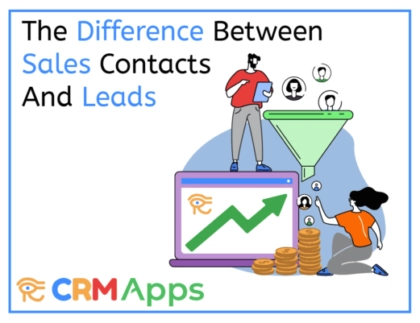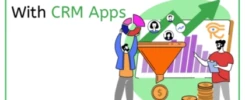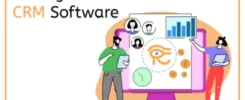CRM software offers businesses the ability to store and manage all their business contacts and leads. To ensure effective usage of any CRM software is based on accurate knowledge on the differences between sales contacts and leads. Accurate knowledge offers sales teams the ability to decide which contact information is a lead and which are contacts, this assists with increased profitability.
Customer Relationship Management (CRM) software offers businesses and sales teams the ability to manage, track and enhance their sales capabilities. CRM Apps offers businesses the ability to input new contact information into a centralised database under either contact or lead descriptions. It is key to differentiate between contacts and sales as it could affect the conversion capabilities.
Leads are labelled as any prospect that shows any interest in your products or services. Leads have no purchase history with your business. Business leads are generated through contact forms, interactions, or phone inquiries. It is never clear whether the prospect has a clear need for your products or services.
Leads that ask for quotations or show interest in your products or services can be labelled as qualifying leads that could be converted into sales contacts. Qualifying leads are eligible to be converted and taken through the process to be converted to a contact that is suitable to certain sales campaigns.
To consider someone as a contact means that there has been contact made either with sales or as business partners. Contacts receive and participate in regular engagement and communication. Within any CRM solution, contacts are listed under accounts that are linked to business opportunities that have happened or in the process.
The difference between leads and contacts is whether contact has been made to the person. This means communication has taken place between the individual and the business in order to sell a product.
Leads can be converted to contacts if they are actively looking for a solution or product and reaching out for quotations and negotiations. Qualifying leads turn into effective sales contacts once sales teams have reached out to the contacts. Through the use of an effective pipeline, it is easy to distinguish leads that have potential to becoming contacts.
The moment a lead responds to follow-up activities, they can be converted into a contact. Leads turn into contacts once they have interacted with your sales teams. It is important to understand that people do not start off as contact, as there are set sales pipelines.
CRM Apps offers businesses the ability to separate their leads from their contacts. Keep track of leads and the communication and follow-ups with one centralised mobile application. Manage and move leads to contacts in a few easy steps.
It is essential to distinguish between leads and contacts, to ensure that effective marketing strategies are used. Turning leads into contacts is a timely process that requires effective resources that are all accessible within CRM Apps.
Utilise the knowledge of the difference between a lead and sales contact for accurate and effective sales conversions that turn leads into contacts. Sales pipelines and seamless integrations with CRM Apps offers businesses the ability to manage and maintain their leads, contacts and returning customers effectively.



